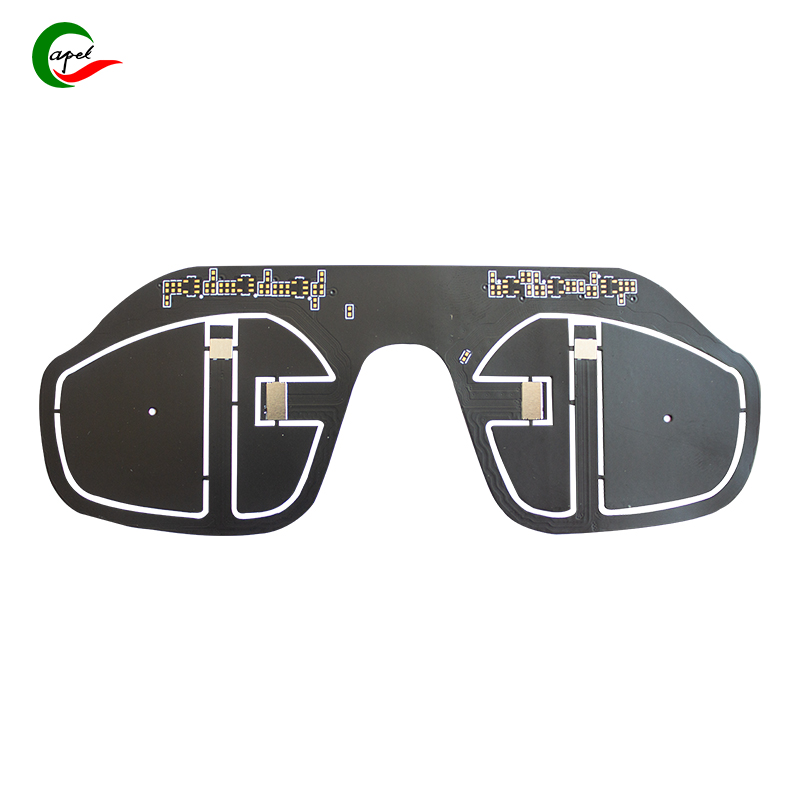Date: 2025-10-21
If you've ever pulled a flex PCB from an automotive module and found hairline cracks in the copper traces, you've witnessed vibration-induced fatigue firsthand. This isn't just an academic concern - I've seen entire production lines halted because 25μm traces in door module flex circuits started failing at 20,000 cycles instead of the expected 80,000.
The automotive environment is particularly brutal on flexible circuits. Whether it's the constant 60Hz rumble of an idle engine or the 300-500Hz vibrations from road irregularities, these forces gradually work-harden copper until microscopic cracks become complete trace failures.
The Stress Concentration Problem
Thin traces (below 20μm) act like fine wires - they concentrate stress at natural weak points like solder joints and bend radii. Under 30g acceleration, we've measured stress concentrations 3-4 times higher at these points compared to the trace body.
The Stiffness Trade-off
While thicker traces seem like an obvious solution, they create their own problems. Traces above 50μm thick become so stiff that they transfer vibration energy to the copper-PI interface, causing delamination rather than trace fractures.
Resonance - The Silent Killer
Every trace has a natural resonant frequency. When vehicle vibrations match this frequency, the amplification effect can double the actual stress on the material. We once traced early failures in a transmission sensor to 35μm traces that resonated perfectly at 280Hz - exactly the dominant vibration frequency in that application.
Through extensive testing across engine control modules, suspension sensors, and infotainment systems, we've developed reliable diameter guidelines:
For Low-Vibration Areas (10-20g)
Infotainment systems and interior sensors typically see milder vibration profiles. Here, 18-25μm traces provide the right balance, typically surviving 100,000+ operating hours. The key is maintaining flexibility while providing adequate current capacity.
Medium Vibration Environments (20-30g)
Door modules and seating electronics experience more significant shaking. We've had excellent results with 25-35μm traces, though the specific choice depends on trace length and bend requirements. Longer traces generally need the upper end of this range.
High-Vibration Applications (30-50g)
Engine bay and suspension applications demand robust solutions. We typically specify 35-50μm traces, often using rolled copper for its superior fatigue resistance. The trade-off is reduced flexibility, so routing becomes more critical.
Simulate Before You Build
Finite element analysis has become our first-line defense against vibration failures. A simple FEA model can reveal stress concentrations and resonance risks that aren't obvious from static analysis. We recently avoided a major redesign by identifying through simulation that 30μm traces would resonate at a common engine frequency.
Prototype with Purpose
Don't just build one version and hope. We typically prototype 3-4 diameter variations and subject them to accelerated vibration testing. The key insight often comes from comparing how different diameters fail rather than just when they fail.
Material Selection Matters
Rolled copper's grain structure handles cyclic stress better, allowing slightly thinner traces
Electrolytic copper needs about 5-10μm additional thickness to achieve similar life
Copper alloys can provide better performance in extreme environments but cost more
The Over-Engineering Mistake
Making traces too thick for their application creates more problems than it solves. We learned this lesson when 50μm traces in a low-vibration infotainment application caused substrate tearing at bend points.
Ignoring Adjacent Effects
Thicker traces need more space. Ensure you maintain at least 0.2mm spacing between 35-50μm traces to prevent vibration-induced short circuits.
Mismatching with Substrate
A good rule of thumb: keep trace thickness at or below 2x the substrate thickness. This maintains a reasonable flexibility balance throughout the stackup.
Resonance Testing
Use shaker tables to identify problematic resonant frequencies. The goal isn't necessarily to eliminate resonance but to ensure it doesn't align with dominant vehicle vibration frequencies.
Accelerated Life Testing
Run 500,000 cycles at your application's maximum expected vibration profile. Look for both catastrophic failures and gradual resistance increases that indicate early fatigue.
Correlation with Field Data
Nothing beats real-world validation. We maintain a correlation database comparing lab results to actual field performance across different vehicle platforms and applications.
Success in automotive flex PCB design comes down to selecting the right trace diameter for your specific vibration environment while considering the entire mechanical system. The optimal choice balances electrical requirements, mechanical survival, and manufacturability.
Through careful simulation, targeted prototyping, and realistic validation, we've consistently achieved 100,000+ hour service life even in demanding under-hood applications. The key is treating vibration survival as a system characteristic rather than just a material property.
related link:
Kaboer manufacturing PCBs since 2009. Professional technology and high-precision Printed Circuit Boards involved in Medical, IOT, UAV, Aviation, Automotive, Aerospace, Industrial Control, Artificial Intelligence, Consumer Electronics etc..